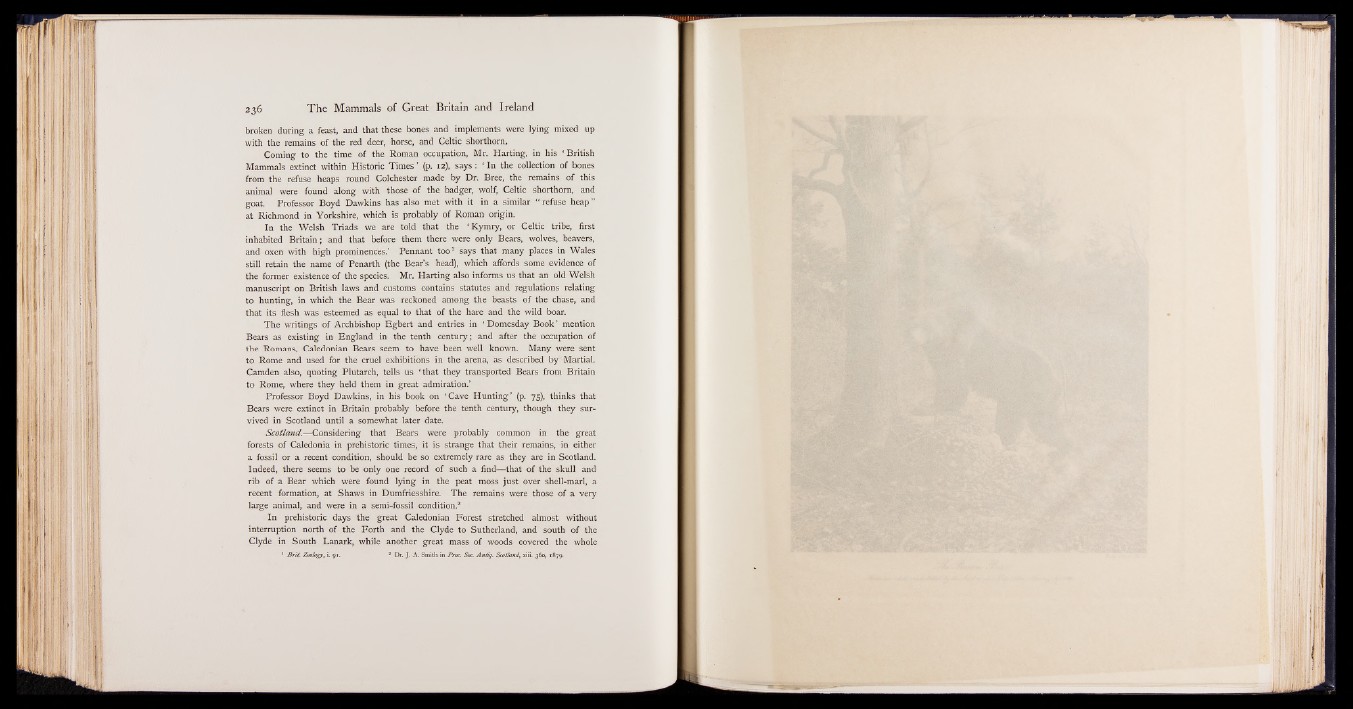
2 3 6 The Mammals of Great Britain and Ireland
broken during a feast, and that these bones and implements were lying mixed up
with the remains of the red deer, horse, and Celtic shorthorn.
Coming to the time of the Roman occupation, Mr. Harting, in his ‘ British
Mammals extinct within Historic Times’ (p. 12), says: ‘ In the collection of bones
from the refuse heaps round Colchester made by Dr. Bree, the remains of this
animal were found along with those of the badger, wolf, Celtic shorthorn, and
goat. Professor Boyd Dawkins has also met with it in a similar “ refuse heap”
at Richmond in Yorkshire, which is probably of Roman origin.
In the Welsh Triads we are told that the ‘ Kymry, or Celtic tribe, first
inhabited Britain; and that before them there were only Bears, wolves, beavers,
and oxen with high prominences.’ Pennant too1 says that many places in Wales
still retain the name of Penarth (the Bear’s head), which affords some evidence of
the former existence of the species. Mr. Harting also informs us that an old Welsh
manuscript on British laws and customs contains statutes and regulations relating
to hunting, in which the Bear was reckoned among the beasts of the chase, and
that its flesh was esteemed as equal to that of the hare and the wild boar.
The writings of Archbishop Egbert and entries in ‘ Domesday Book ’ mention
Bears as existing in England in the tenth century; and after the occupation of
the Romans, Caledonian Bears seem to have been well known. Many were sent
to Rome and used for the cruel exhibitions in the arena, as described by Martial.
Camden also, quoting Plutarch, tells us ‘ that they transported Bears from Britain
to Rome, where they held them in great admiration.’
Professor Boyd Dawkins, in his book on ‘ Cave Hunting’ (p. 75), thinks that
Bears were extinct in Britain probably before the tenth century, though they survived
in Scotland until a somewhat later date.
Scotland.— Considering that Bears were probably common in the great
forests of Caledonia in prehistoric times, it is strange that their remains, in either
a fossil or a recent condition, should be so extremely rare as they are in Scotland.
Indeed, there seems to be only one record of such a find— that of the skull and
rib of a Bear which were found lying in the peat moss just over shell-marl, a
recent formation, at Shaws in Dumfriesshire. The remains were those of a very
large animal, and were in a semi-fossil condition.2
In prehistoric days the great Caledonian Forest stretched almost without
interruption north of the Forth and the Clyde to Sutherland, and south of the
Clyde in South Lanark, while another great mass of woods covered the whole
1 B rit. Zoology, L 91. 8 Dr. J. A. Smith in Proc. Soc. Antiq. Scotland, xiii. 360, 1879.